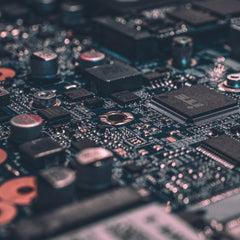The Internet of Things (IoT) is reliant upon connection, making communication one of the most rudimentary functions of internet-enabled technology. Interoperability opens up endless opportunities for IoT devices as it ensures that devices will be able to communicate with each other and store data in a central location. The IoT will be able to fulfil its promises of convenience and functionality if multiple devices can be controlled simultaneously while being able to communicate and transfer data with each other.
A majority of the companies that are manufacturing IoT technology are trying to create platforms and devices that will be accepted as the “industry leading solution.” However, this culture within the IoT industry has led to a large assortment of devices that have to be controlled as separate entities and from different apps. The fact of the matter is that consumers simply don’t want to have 50 different devices, each with their own app, that operate independently of each other. The growth of the industry will be limited until manufacturers begin to collaborate in developing devices that will work together within the same network.
Manufacturers clearly understand that interoperability is a necessity for the IoT to continue to grow. So why hasn’t a standardized control system been created? The answer is simple: money and brand recognition. Each company wants to be the one that develops the ultimate “hub” for controlling IoT technology as it will come with a major payout. This isn’t necessarily a bad thing; it just means it will take more time to reach seamless interoperability than it would if there were more collaborative efforts. That being said, there are still some open-source initiatives to create interoperability that have shown signs of promise such as Qualcomm’s AllSeen Alliance.
When it comes to the individual corporations that are trying to create hubs for controlling smart technology, it appears that Apple is on the verge of creating total interoperability for HomeKit products. The upgraded Apple operating system, iOS10, has transformed the way HomeKit is used with its addition of the Home app. This app allows for any HomeKit device to be controlled from a central location. This means that instead of going to an app for each manufacturer, all devices can be controlled in the hub Apple has integrated within their new operating system. Companies like Google and Microsoft have also created similar smart home platforms, but they don’t quite offer this level of interoperability and don’t seem to have as much traction in the consumer world. These developments in HomeKit are great strides in achieving interoperability within the IoT.
Even though HomeKit has achieved a previously unseen level of interoperability, it still isn’t quite what consumers want in terms of creating a smart home that is completely connected. This is because HomeKit products are the only products that can communicate and operate within this network, thus limiting the device integration to Apple approved devices. This isn’t a bad thing for Apple because many other tech giants are trying to create this same level of interoperability for their respective smart home platforms. At this point in time, this segregated version of interoperability is the best consumers will get until these large corporations put their differences aside.
The current trends within the IoT industry are unlikely to change anytime soon due to the fact that smart home technology is still in the late stages of its infancy. As technology becomes more advanced and more efficient, consumers will begin to demand networks that are more connected, with devices that are able to communicate and operate in harmony. The interoperability provided in Apple HomeKit is a significant advancement from previous systems and is an innovative solution at this point in time. It will be interesting to see if large IoT businesses will be willing to work together in an effort to create a centralized hub that can control and communicate with any type of smart device.






